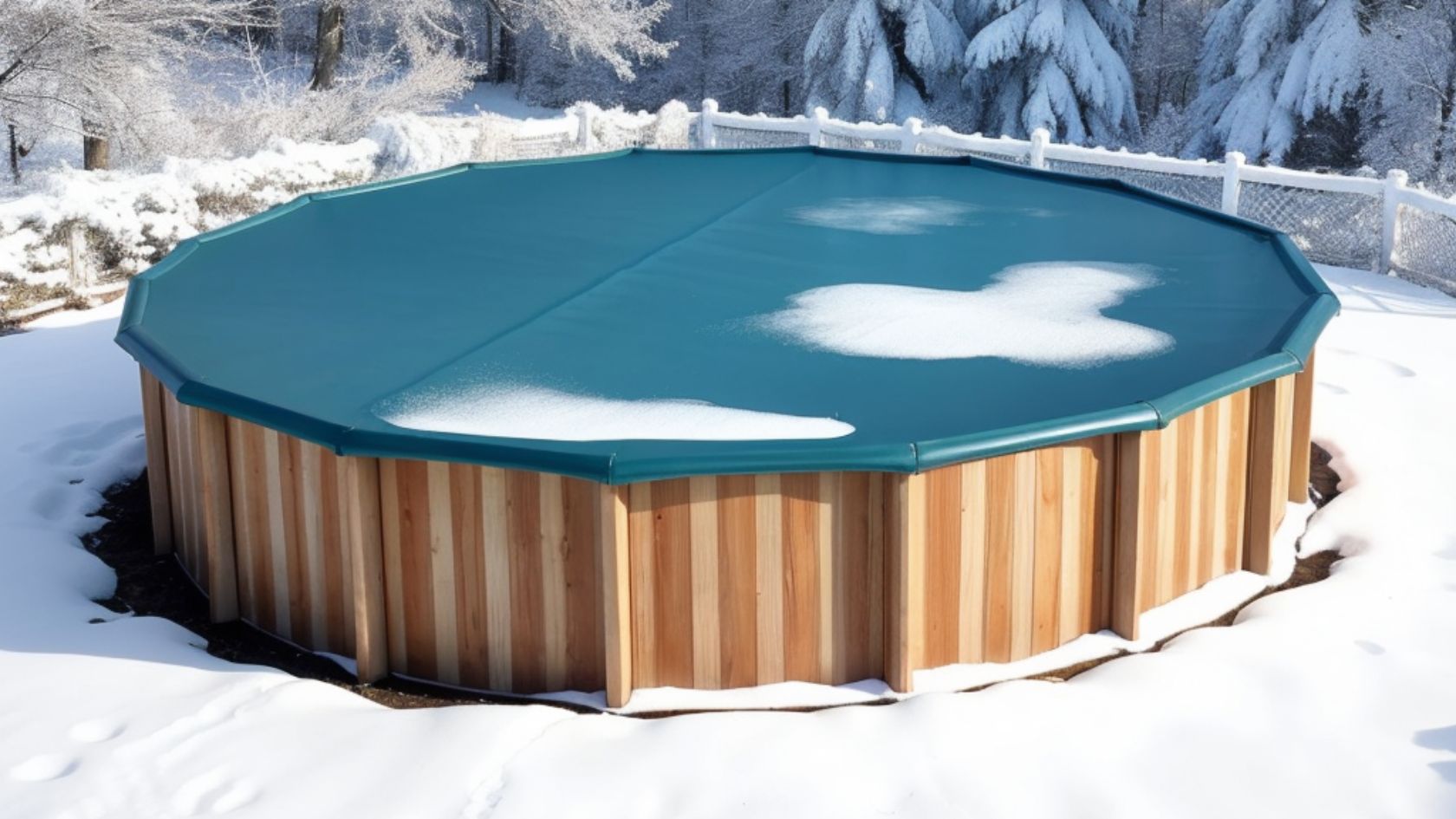As the temperatures drop, winterizing your swimming pool becomes essential for preventing damage and ensuring an easy spring opening. Whether you have a traditional chlorine pool or a saltwater system, following a step-by-step approach will help you protect your investment and keep your pool in top shape year-round. This guide will walk you through the winterization process, provide E-Z POOL® product recommendations, and explain how to manage seasonal maintenance for saltwater pools.
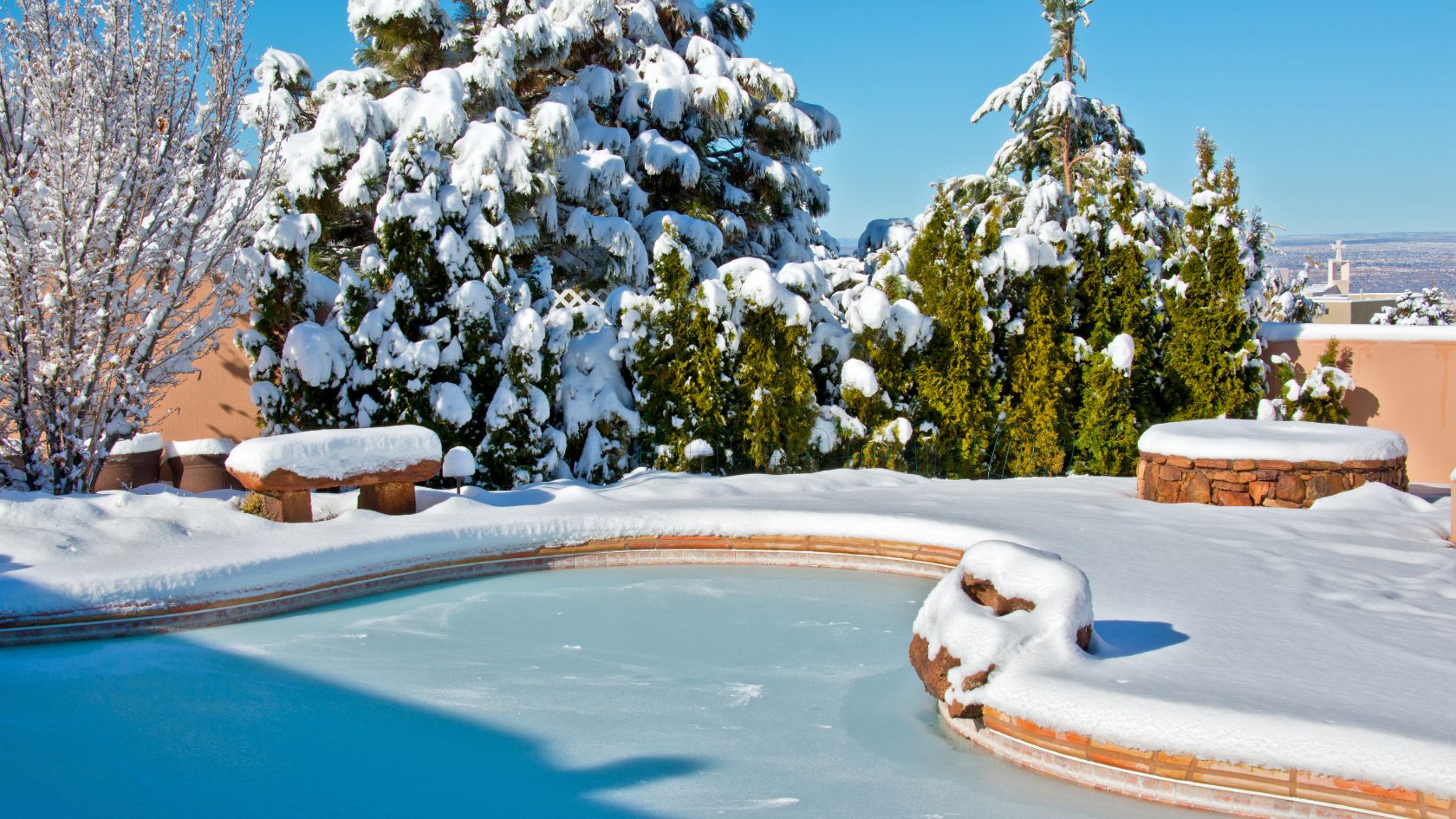
Why Winterizing Your Pool Is Essential
Winterizing your pool properly is about more than just keeping it covered; it’s about protecting your pool’s structure, equipment, and water quality. Here are the main reasons why you should winterize your pool:
- Prevent Freeze Damage: As temperatures fall, water left in your pool’s pipes, pump, or filter can freeze, causing cracks and other serious damage. Winterizing your pool ensures that the plumbing and equipment are safe from these risks.
- Avoid Green Water in the Spring:Without proper winterization, algae can take over, leading to murky green water that requires extensive cleaning when you reopen the pool. By balancing the water and covering it correctly, you reduce the chance of algae growth.
A thorough winterization process saves you time and money, allowing you to enjoy a clean, clear pool come spring.


Preparing Your Pool Before Winterization
Proper preparation is the first step to successfully winterize a pool. Whether you have a chlorine or saltwater pool, follow these steps:
Test and Balance Your Water Chemistry
Before closing your pool, testing and balancing the water chemistry is vital for maintaining the pool’s condition over winter.
- Check pH, Alkalinity, and Calcium Hardness: The pH should be between 7.2 and 7.6, with total alkalinity between 80-120 ppm and calcium hardness between 200-400 ppm. Balancing these levels helps prevent scale buildup and corrosion, protecting both pool surfaces and equipment.
- Adjust Pool Chemicals as Needed: Use the appropriate balancing chemicals to adjust any imbalances and protect your pool during the colder months.
Note for Saltwater Pools:
- In saltwater systems, it’s also important to monitor salinity levels. Keeping salinity within the recommended range helps protect the salt cell. Adding PEPPER® weekly to your saltwater pool can further enhance water clarity, stabilize pH levels, and prevent scale buildup on salt cells and other equipment.
Use Products for Simplified Winterization
Using the right products can streamline the winterizing process and reduce the need for multiple chemicals. Whether you have a saltwater pool or chlorine pool, E-Z POOL® is an ideal winterization chemical.
For Chlorine Pools:
E-Z POOL® is an excellent all-in-one solution. It acts as a shock, algaecide, stain preventer, and buffer to maintain balanced water chemistry throughout winter. Apply 2 lbs. of E-Z POOL® per 10,000 gallons of water and circulate for 30 minutes before shutting off the pump.
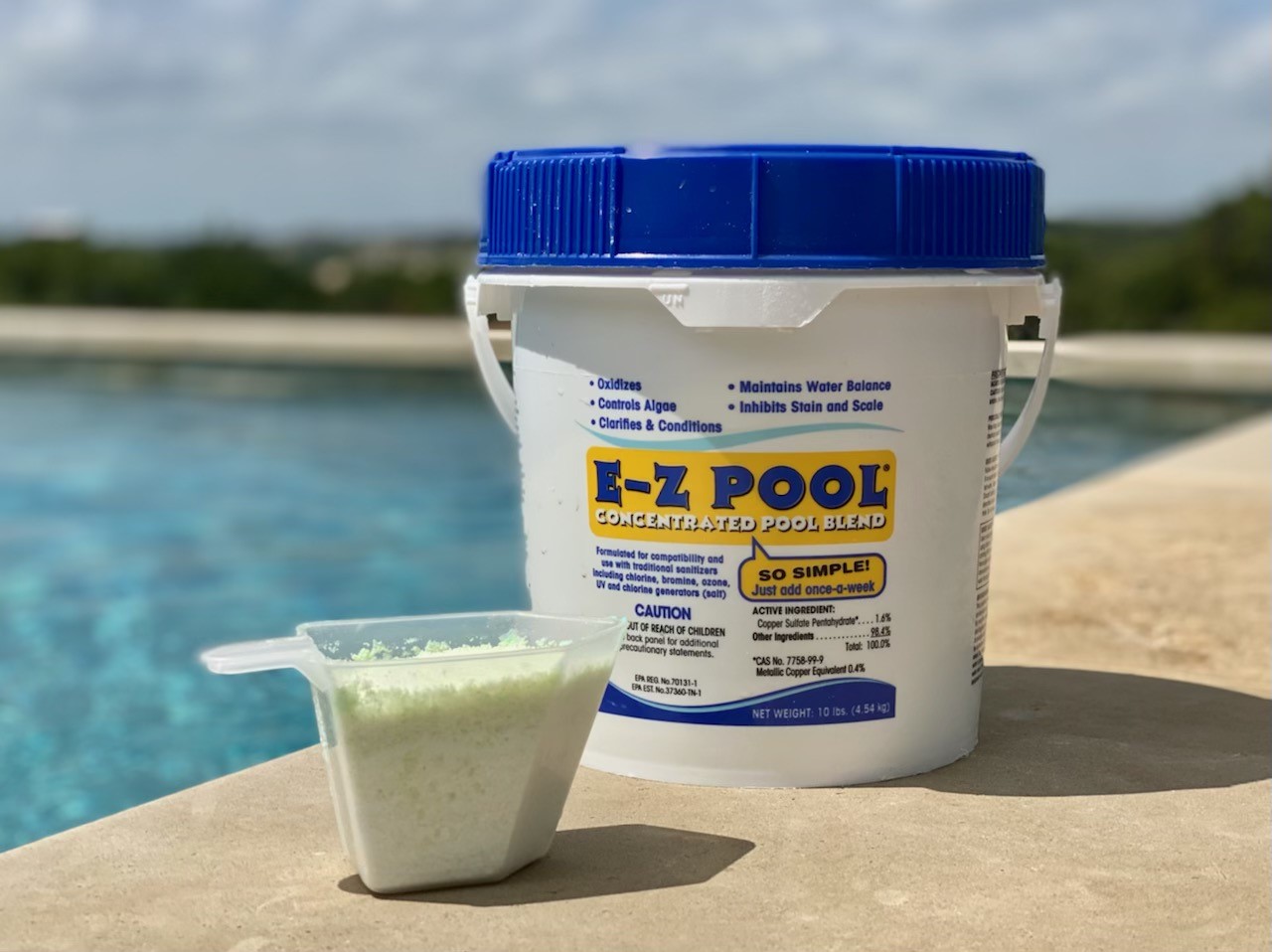
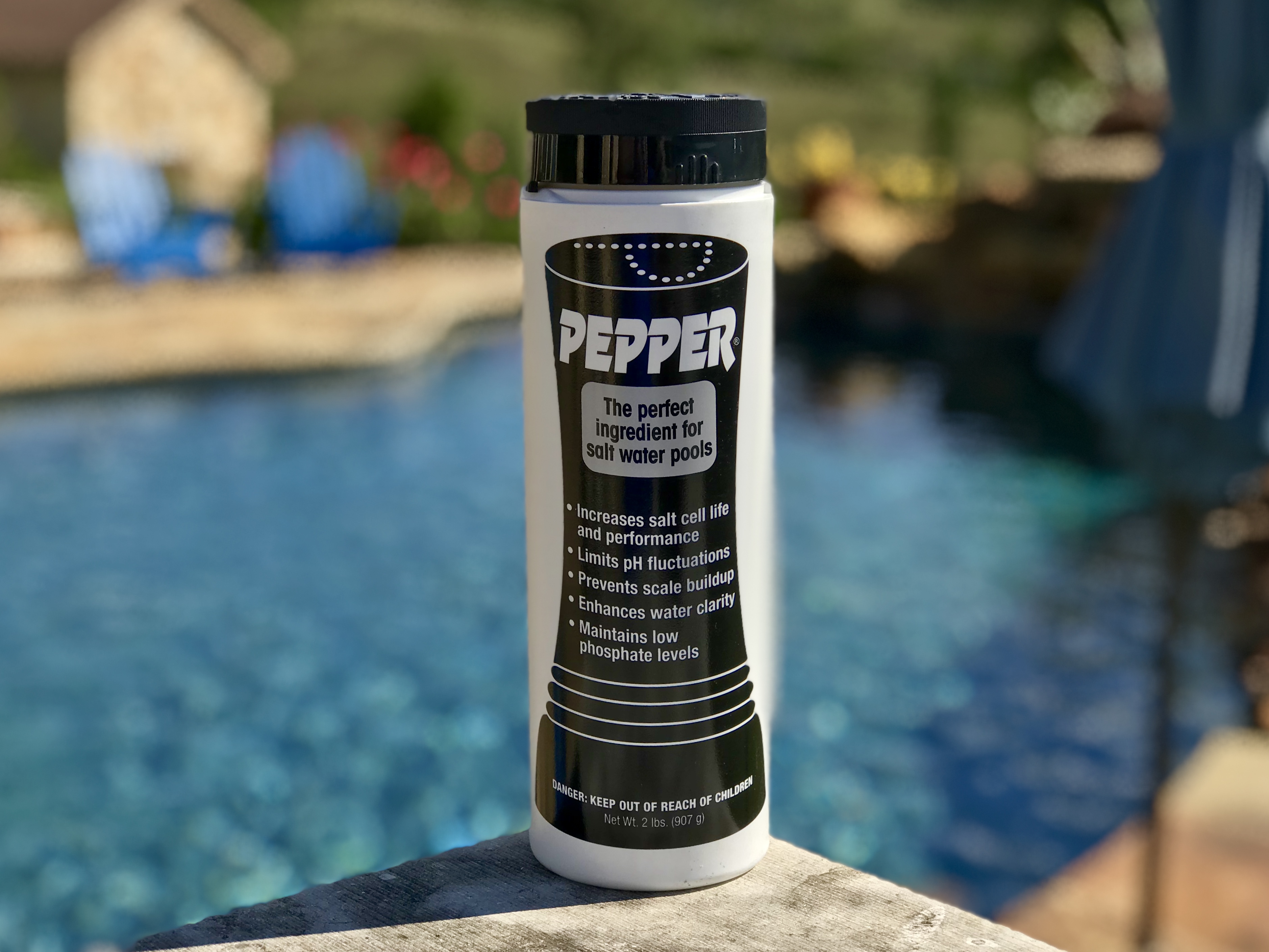
For Saltwater Pools:
- E-Z POOL® is excellent for saltwater pools, too. Follow the directions listed for chlorine pools in your saltwater pool for the same great benefits.
- PEPPER® is tailored for saltwater systems, and routine weekly use helps extend the life of the salt cell. By reducing pH fluctuations and preventing scaling, it ensures that your pool’s equipment remains in good condition throughout the winter.
- To further enhance the cleaning process, use OXY SPLASH™, a non-chlorine oxidizer that eliminates organic contaminants without interfering with the salt system. Apply it before PEPPER® for maximum clarity and effectiveness.
Use ENZymePRO® to Break Down Organics
Organic debris may still enter your pool over the winter. Using ENZymePRO® periodically helps break down these contaminants:
Application: In addition to E-Z POOL®, use ENZymePRO® to break down organics as they are introduced during the winter months. This concentrated, high strength formula increases chlorine effectiveness and prevents scum and build-up on tile and waterlines. For best results, circulate for 30 minutes prior to pool closing.If you add both ENZymePRO® and E-Z POOL® at the same time, circulate for 60 minutes prior to shutting down the system for the season.
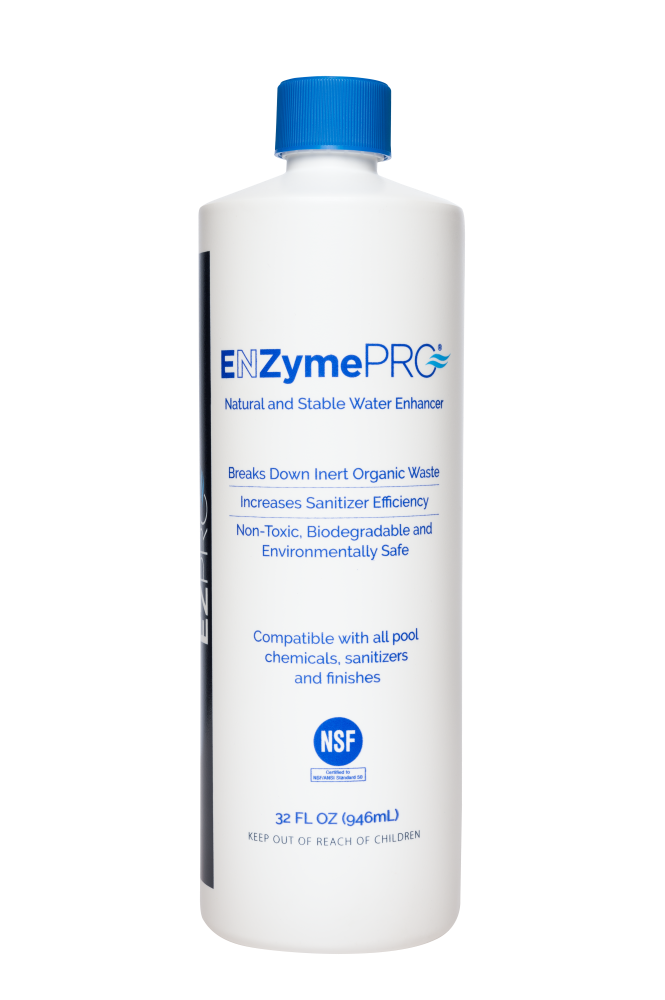
Clean Your Pool Thoroughly
Before closing your pool, it’s essential to remove any debris that could decompose over winter.
- Brush and Vacuum: Make sure all leaves, dirt, and debris are removed from your pool. This reduces the risk of organic buildup and algae formation.
- Clean Skimmer and Pump Baskets: Empty the skimmer and pump baskets to ensure they're clean and ready for next spring.
- For in-ground pool owners, it is especially important to ensure that all debris is removed to prevent damage during the winter months.
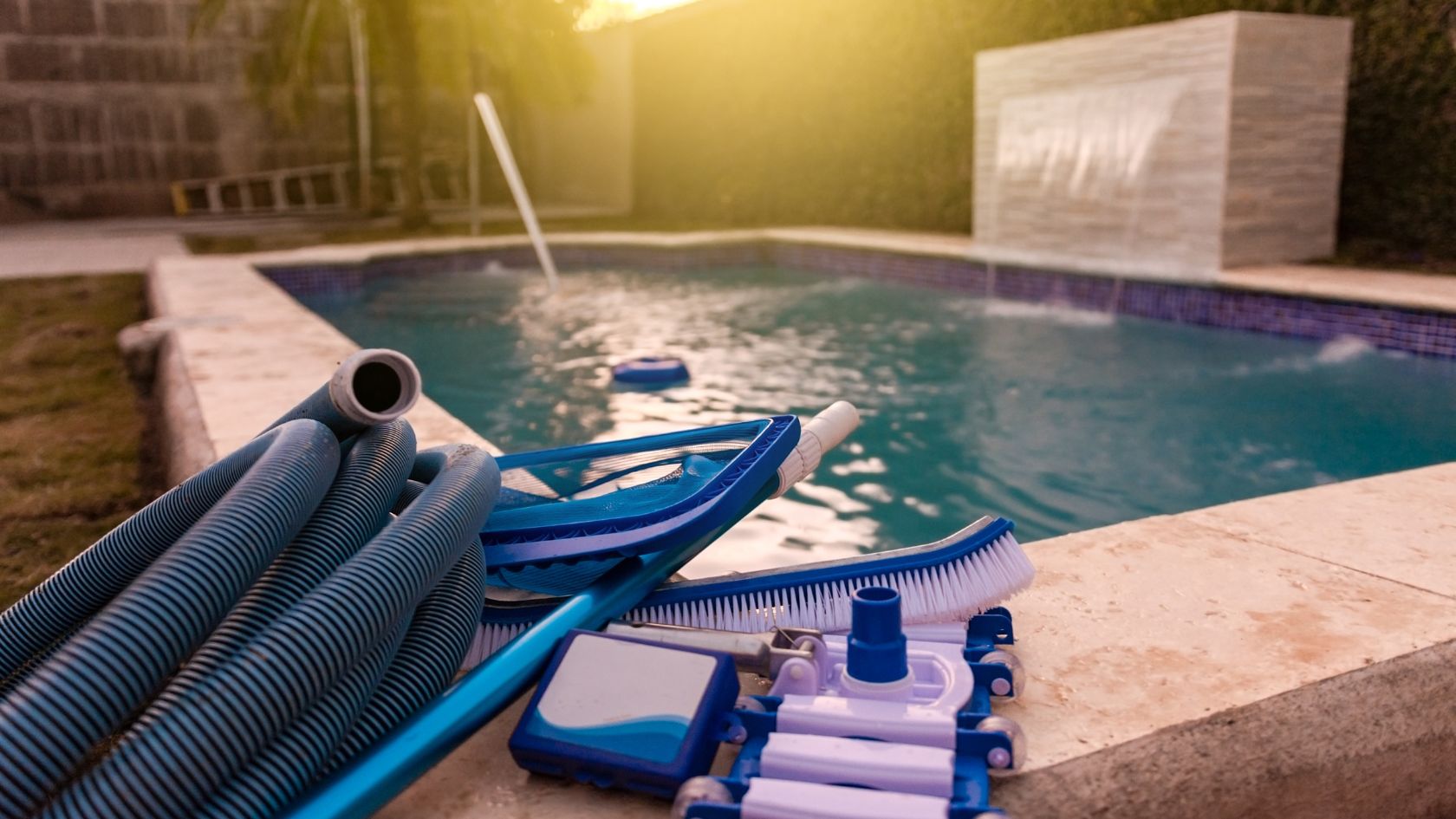
Lower the Water Level
Lowering the water level is a crucial step in winterizing your pool. Consult with your pool installer or local pool professional for the exact levels to drain to based on your specific pool. For in-ground pools, the general rule is to lower the water level to about 12-18 inches below the skimmer and return lines. This helps prevent ice from forming in the pipes and equipment, which can cause damage and costly repairs.
For above-ground pools, basic advice would be to lower the water level to about 6-12 inches below the skimmer. Use a submersible pump or a pool vacuum to lower the water level efficiently.
Be careful not to drain the pool completely, as this can cause damage to the pool walls and liner. Maintaining the correct water level ensures that your pool remains in good condition throughout the winter months.
And remember, your local pool pro will have the best advice for your pool.
Winterizing Pool Equipment and Plumbing
Once your pool is clean and chemically balanced, focus on protecting the equipment and plumbing lines. Proper winter pool maintenance is crucial to ensure that your pool equipment and plumbing remain in good condition throughout the winter.
Protect Pool Pipes and Plumbing
Water left in your pool’s pipes and equipment can freeze and expand, causing serious damage. Properly winterizing these components will help you avoid costly repairs.
- Drain Pool Equipment: Ensure the pool’s pump, filter, heater, and other equipment are drained thoroughly. Use an air blower to remove any remaining water in the lines.
- Blow Out Pool Lines: This process removes residual water, preventing freezing and pipe damage.
- Ask a Pro: Consult with your pool installer or local pool professional for detailed instructions on how to winterize plumbing lines and equipment.
Saltwater Pool Tip:
- Inspect the salt cell for any buildup before winterizing. While PEPPER® reduces the frequency of cleanings, it’s important to ensure that the salt cell is clear before shutting down the system.
Drain and Disconnect the Pool Pump
Draining and disconnecting the pool pump is essential to prevent damage from freezing temperatures. Start by turning off the power to the pump to ensure safety. Next, drain the water from the pump and pipes using a drain valve or a wet/dry vacuum to remove any remaining water. Disconnect the hoses from the pump and filter, and make sure they are completely drained. Store the hoses in a dry place to prevent damage from freezing temperatures. To further protect your pool pump and pipes, consider applying a winterizing kit or pool antifreeze. This step helps prevent corrosion and damage, ensuring your pool equipment is ready for use when the warmer weather returns.
Remove and Store Pool Accessories
To prevent damage during winter, remove and clean all pool accessories:
- Ladders, Handrails, and Toys: Remove and store these in a dry location. This prevents rust and wear during the off-season.
- Skimmer Baskets and Pool Cleaner: Clean these thoroughly and store them indoors to avoid exposure to the elements.
Protecting the Pool
Protecting the pool from debris, algae growth, and freezing temperatures is crucial during the winter months. Here are some steps to take to ensure your pool remains in top condition:
Protect the Skimmer and Return Jets
Protecting the skimmer and return jets is essential to prevent damage from freezing temperatures. Start by removing any debris from the skimmer basket and cleaning it thoroughly. If applicable, apply a skimmer cover or a winter skimmer plug to prevent water from entering the skimmer and causing damage. For the return jets, remove any debris and clean them thoroughly as well. Apply a return jet cover or a winter return jet plug to prevent water from entering the return jets. These steps help protect your pool’s plumbing and equipment from the harsh winter conditions.

Cover the Pool with a Pool Cover
Covering the pool with a pool cover is the final step in winterizing your pool. Choose a high-quality pool cover that fits your pool perfectly. For in-ground pools, use a safety cover or a winter cover to provide full coverage and prevent debris from entering the pool. For above-ground pools, use an above-ground pool cover with an air pillow to absorb the expansion of the pool water when it freezes. Secure the cover with a cable and winch or a combination of winter cover clips and a cable. Make sure the cover is tight and secure to prevent debris and animals from entering the pool. A properly secured pool cover helps maintain water clarity and protects your pool from the elements throughout the winter season.
Select the Right Pool Cover
The right pool cover helps keep debris out and maintains water clarity.
- Solid Covers: These provide full coverage and prevent sunlight from reaching the water, reducing algae growth.
- Mesh Covers: These allow water drainage but may need frequent debris removal.
Inspect and Secure the Cover
Proper installation and maintenance of your cover ensure its effectiveness:
- Check for Wear and Tear: Inspect the cover for damage and repair any issues to maintain protection.
- Use Water Bags or Anchors for Inground Pool Covers: Secure the cover tightly with water bags or anchors to keep it in place during windy conditions.
Ongoing Seasonal Maintenance for Pools During Winter
Even after you’ve winterized your saltwater pool, some seasonal maintenance is necessary to protect the equipment and ensure water quality.
Monitor Your Pool Cover and Water Level
While your pool is covered, external factors like wind and snow can affect the cover and water level:
- Inspect the Cover for Damage: Check the cover at least once a month for tears or wear. Promptly repair any issues to keep debris out.
- Monitor Water Levels: Keep an eye on water levels under the cover. Too much water on top of the pool cover can stress the cover or damage the pool structure when temperatures drop.
Preparing for a Successful Spring Opening
When it comes to maintaining your pool, avoiding common mistakes during the shocking process is crucial to ensuring both safety and effectiveness. One of the most frequent errors pool owners make is not following the manufacturer’s dosing instructions. Each type of shock has specific guidelines for how much to use based on the size of your pool and the current water conditions. Failing to adhere to these instructions can result in over-shocking or under-shocking your pool. Over-shocking can lead to excessively high chlorine levels, which may cause skin irritation, damage to pool surfaces, and even equipment corrosion. On the other hand, under-shocking may leave your pool inadequately sanitized, allowing bacteria, algae, and other contaminants to thrive.
Another critical mistake to avoid is neglecting to wear the recommended protective clothing and eyewear on the product's label instructions.
Taking these precautions helps to ensure that you can apply the shock safely and without harm.
Finally, not testing your pool water weekly is a common oversight that can lead to imbalanced water chemistry. Regular water testing is essential for monitoring the levels of chlorine, pH, alkalinity, and other important factors in your pool. Without consistent testing, you may not realize when your pool’s chemistry is out of balance, which can diminish the effectiveness of your shock treatments and lead to problems such as cloudy water, algae growth, and equipment damage. By making water testing a regular part of your pool maintenance routine, you can catch imbalances early and adjust your treatments accordingly to maintain optimal water quality.
Avoiding these common mistakes will help you keep your pool water safe, clear, and well-maintained, ensuring that your pool remains a source of enjoyment all season long.
Once winter is over, it’s time to transition your pool back to summer use. Taking the proper steps during the opening process will make it easier and quicker.
Inspect Your Equipment and Pool Structure
Before opening, check that everything is in good shape:
- Examine the Pool Cover: Carefully remove the cover and inspect it for any damage. Clean and store it properly for the next season.
- Check Pool Surfaces: Look for cracks or stains on the pool finish or tiles. Address any issues before the swim season begins.
- Inspect the Salt Cell: For saltwater pools, verify that the salt cell is free from scaling. Clean it if needed before restarting the system.
Test and Adjust Water Chemistry
Testing the water chemistry as you reopen the pool is vital for a smooth start to the season.
- Shock the Pool: Apply OXY SPLASH™ to eliminate contaminants and restore water clarity.
- Use E-Z POOL® and Revive!® to start the new pool season with the best water quality.
- Adjust Salt Levels: For saltwater systems, allow pool to circulate for at least 72 hours before testing salt levels and adjust if necessary.
Restart the Pool Equipment
Restarting equipment properly ensures it runs smoothly:
- Refill the Pool: If you lowered water levels for the winter, bring them back to the appropriate mid-skimmer mark before starting the system for the first time.
- Prime the Pump: Fill the pump with water before turning it on to avoid airlock issues.
- Clean or Replace Filters: Backwash sand or DE filters and clean cartridge filters.
- Inspect Heaters and Skimmers: Check for obstructions and ensure everything is functioning correctly.
Wrapping Up: Protect Your Pool All Winter Long
Proper winterization, ongoing seasonal maintenance, and a thorough spring opening are essential for keeping your pool in top condition. Whether you have a chlorine or saltwater pool, using products like E-Z POOL®, PEPPER®, and ENZymePRO® ensures your pool remains balanced and protected all year. By following these steps, you’ll enjoy a clean, stress-free pool opening and be ready for another great swim season.
